
Source: eMedClub News
At present, tens of millions of people around the world seek to recover and rebuild due to the damage or loss of diseased tissue every year, and if we can manufacture biological substitutes that precisely match the patient's tissue structure through some technology, this need will become as simple as robotic replacement parts! This is not fanciful, the development of bio-3D printing technology is making this sci-fi imagination gradually towards reality.
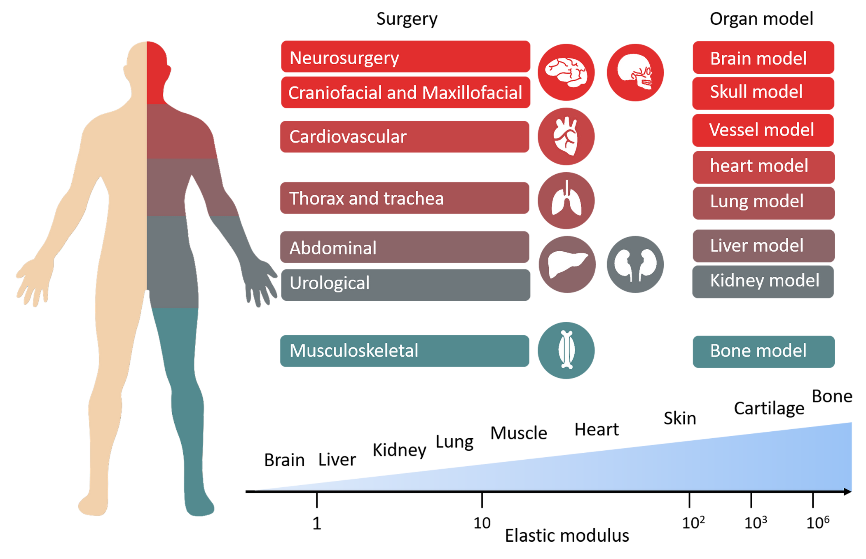
▲Application field of organs, image source: DOI: 10.1002/advs.202101394
In recent years, biological 3D printing technology ushered in a wide range of applications and in-depth research, science is infinitely complex, but researchers can through its unique understanding and exploration, for the human into the future medical treatment to lay a foundation. Recently, an article published in Nature Communications by the University of Oxford demonstrated a technology that uses 3D printed human stem cells iPSC to make a simplified cerebral cortex, and the results showed that the tissue printed by the technology can be perfectly integrated with the host tissue after implantation in the mouse brain slice. This shows that researchers have made substantial progress in controlling the differentiation and arrangement of human IPscs to form the basic functional units of the cerebral cortex and is expected to be used to treat brain injuries, opening the door to creating personalized implantable treatments for brain injuries.
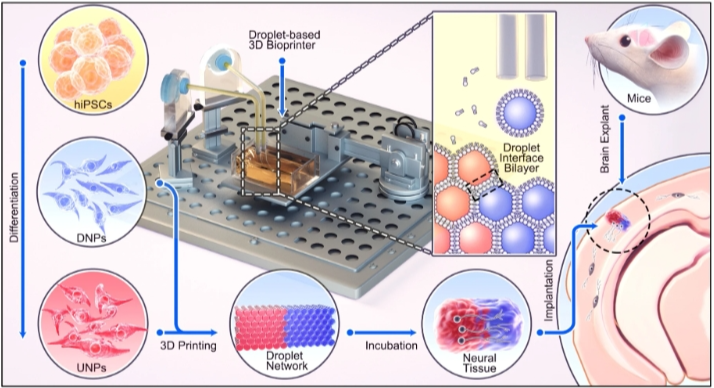
▲Experimental design, source: DOI: 10.1038/s41467-023-41356-w
Designing human tissues with different cell types and structures is challenging, especially the brain. The cerebral cortex is composed of layer-specific neurons organized into vertical columns, which not only has a six-layer structure, but also intracortical connections of neural circuits between different layers, providing higher cognition through complex neural circuits.
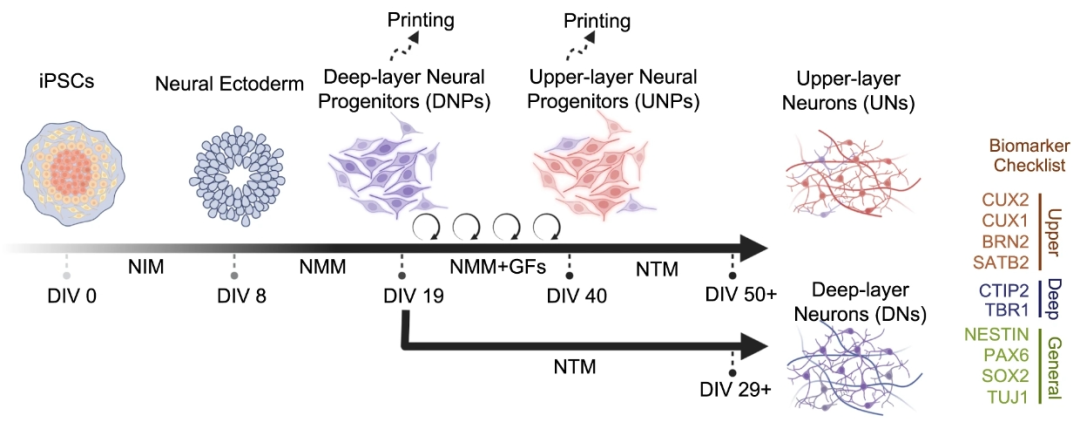
▲ Generate specific nerve cells, DOI: 10.1038/s41467-023-41356-w
The researchers first divided hiPSCs into two subtypes of neural progenitor cells (NPs), upper and deep neural progenitors (UNP and DNP), and then suspended these cells in a solution to generate two "bioinks." These layer specific NPS are then printed using 3D drop printing technology to produce structurally well-defined and stentless soft tissues, namely cerebral cortex tissue with two layers of tissue, which can maintain the layered structure in vitro, exhibit layer specific biomarker expression, and form a structurally integrated process network. The researchers observed the migration and maturation of neurons during in vitro culture more than a week after 3D printing. Finally, when the printed cortical tissue was implanted into the lesion of the isolated mouse brain explants, the implant formed a structural connection with the host tissue and maintained its calcium ion activity, that is, substantial structural integration occurred at the boundary, showing structural and functional integration with the host tissue, which could be demonstrated by projection of the protrudes and migration of neurons.
In the future, the researchers aim to implant after a longer post-implantation incubation time for more advanced repairs. The researchers also intend to further refine the droplet printing technology to create complex, multi-layered cortical tissue that more realistically mimics the structure of the human brain. In addition to their potential to repair brain damage, these engineered tissues could be used for drug evaluation, brain development research, and to improve our understanding of the foundations of cognition.
Stem cell 3D printing imagination
3D printing of biomaterials has attracted more and more attention due to its personalized and precise biomedical applications. Biomaterial 3D printing research has made important progress in medical and surgical design models, surgical guides, in vitro medical devices, and non-degradable permanent implants, and has been carried out clinical applications. Breakthroughs in biomaterials science have provided a rich selection of "inks" for bioprinting that can not only meet complex bioprinting needs, but also carry and progressively release growth factors and drugs to aid the recovery process. At the same time, with the progress of stem cell therapy and genetic engineering technology and other fields, our cognition and application of bio-3D printing will also be further expanded.
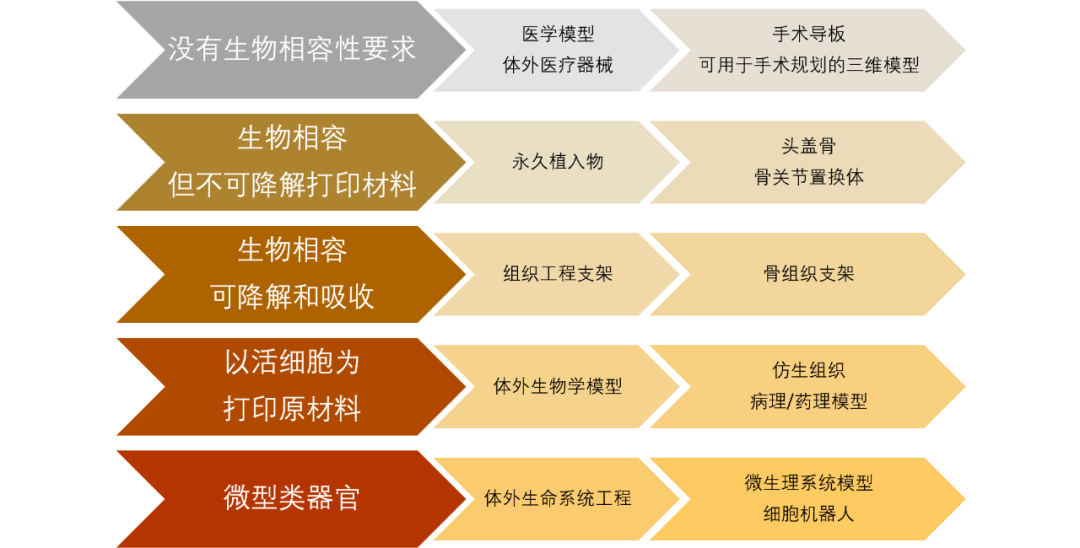
▲The development stage of generalized bio-3D printing
In December 2022, the team of Associate Professor Ma Shaohua of Tsinghua University developed the "high-throughput stem cell microspheres in-situ 3D printer" for the first time, taking the lead in realizing contactless stem cell microspheres in-situ printing transplantation in the world, and proposed the "high-density stem cell microspheres gap transplantation technology", which can improve the transplantation area under the condition of limited stem cell number. It has greatly improved the retention rate of stem cell transplantation, and has shown good repair effect in severe skeletal muscle trauma and hair follicle regeneration, and is expected to be applied to the repair of large area skin trauma and soft organ injury.
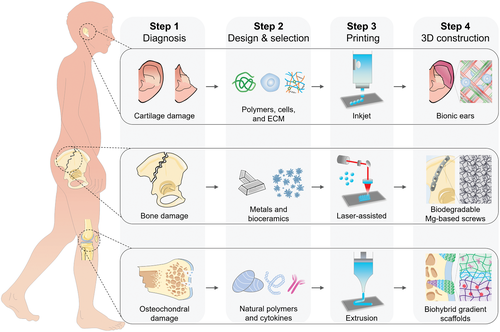 ▲图源:DOI:10.1002/adhm.201700298
▲图源:DOI:10.1002/adhm.201700298
In June 2023, researchers from the University of California in the United States bioprint tumor organoids and use high-speed live cell interferometry and machine learn-based quantitation to screen for drugs. This approach allows characterization of treatment response and captures clinically observed transient changes in treatment resistance and intrabample-sample heterogeneity.
In July 2023, the team of Professor Wang Xiumei of Tsinghua University used 3D bio-printing technology to print neural stem cells (NSCs) into neuro-like fibers, completing excellent functional reconstruction, which can improve the ecological microenvironment and promote the regeneration of large segments of spinal cord injury, revealing the evolution process of active structure after implantation, and providing new ideas for the clinical treatment of spinal cord injury.
In August 2023, a team from the University of Waterloo achieved 3D printing of a complex tumor model that not only reflects the complexity of the tumor, but also simulates the environment around the tumor. A living three-dimensional model of a complex cancer can be used to test different modes of treatment, which provides an excellent tool for studying the behavior of cancer cells with high spatial and temporal resolution.
In September 2023, the scientific research team of Guangzhou Institute of Biomedicine and Health of the Chinese Academy of Sciences successfully cultivated human kidneys in pigs for 28 days, which is also the first time in the world to report the case of xenogenic cultivation of humanized functional organs in vivo.
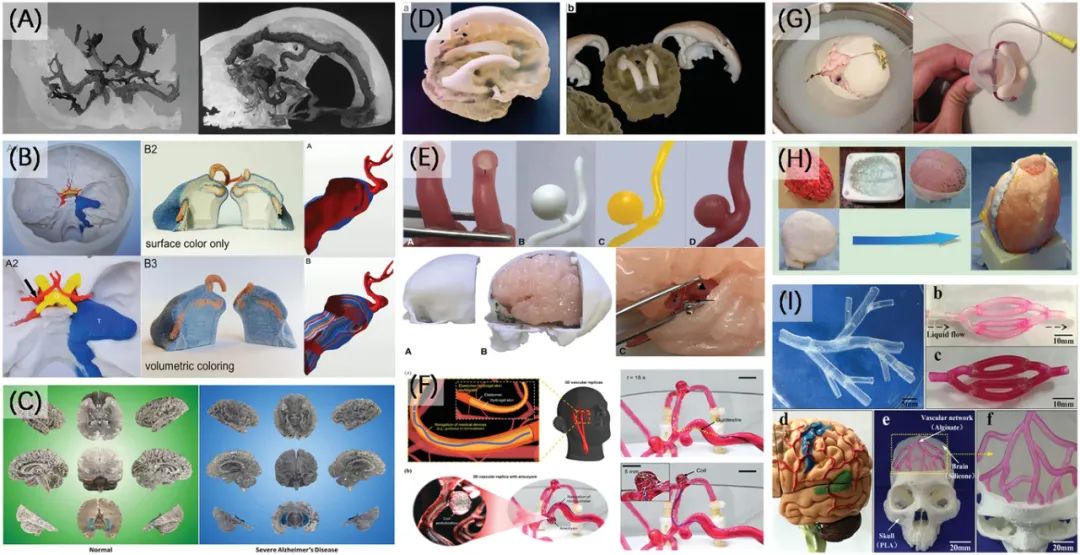
▲Image source: DOI: 10.1002/advs.202101394
On October 9, 2023, Carcinotech and CELLINK, a 3D bioprinting company, announced a partnership to create a tumor model using 3D bioprinting and promote its commercial application. These models can dramatically improve treatment accuracy and speed up the drug development process, reducing drug development costs.
Existing organoids are often composed of tissue-limited adult stem cells, induced pluripotent stem cells or tumor cells, but the three major problems of vascularization, immunization and systematization are difficult to break through by previous construction methods. Through biological 3D printing technology, the manual construction of organoids can be replaced, and the quality of organoids can be improved in an all-round way from the degree of automation and bionic degree, which has gradually been called a new generation of methods for constructing organoids. Bio-3d printing has brought many advantages for the construction of organoids, such as fully automated high-throughput production, high-stability and repeatable batch models, complex and controllable organoid structures, and stable and accurate printing of high-viscosity bionic materials, which will accelerate the development of precision medicine, regenerative medicine, drug screening, gene editing, disease modeling and other fields in the future. Give full play to the advantages of stem cell 3D printing to provide more imagination for the development of future medical treatment.
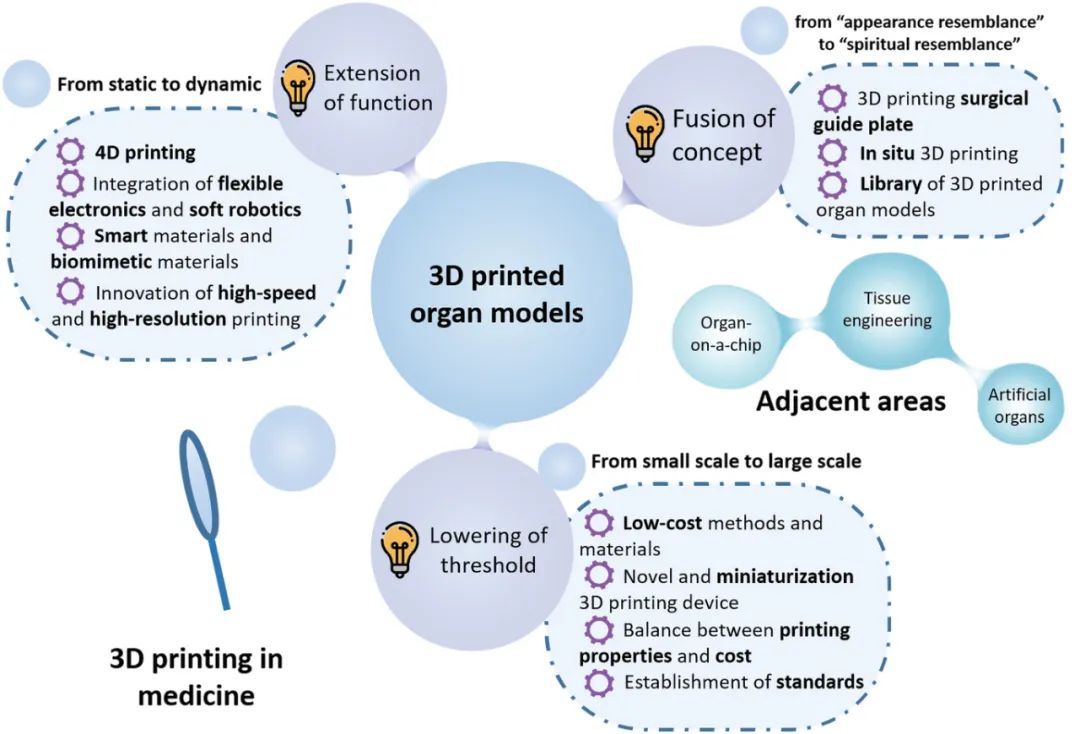
▲Image source: DOI: 10.1002/advs.202101394